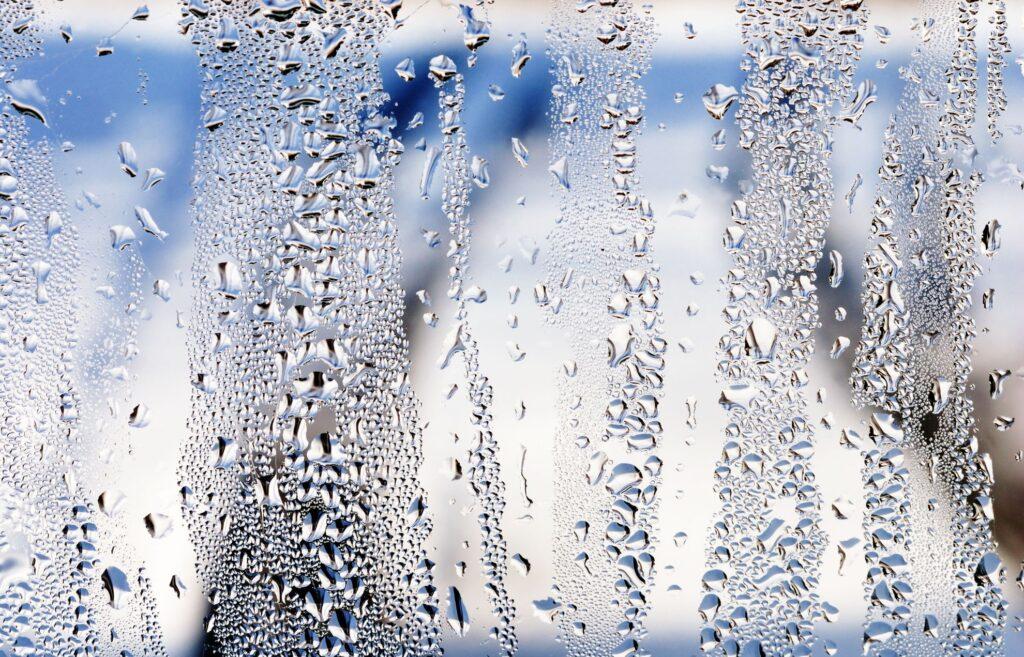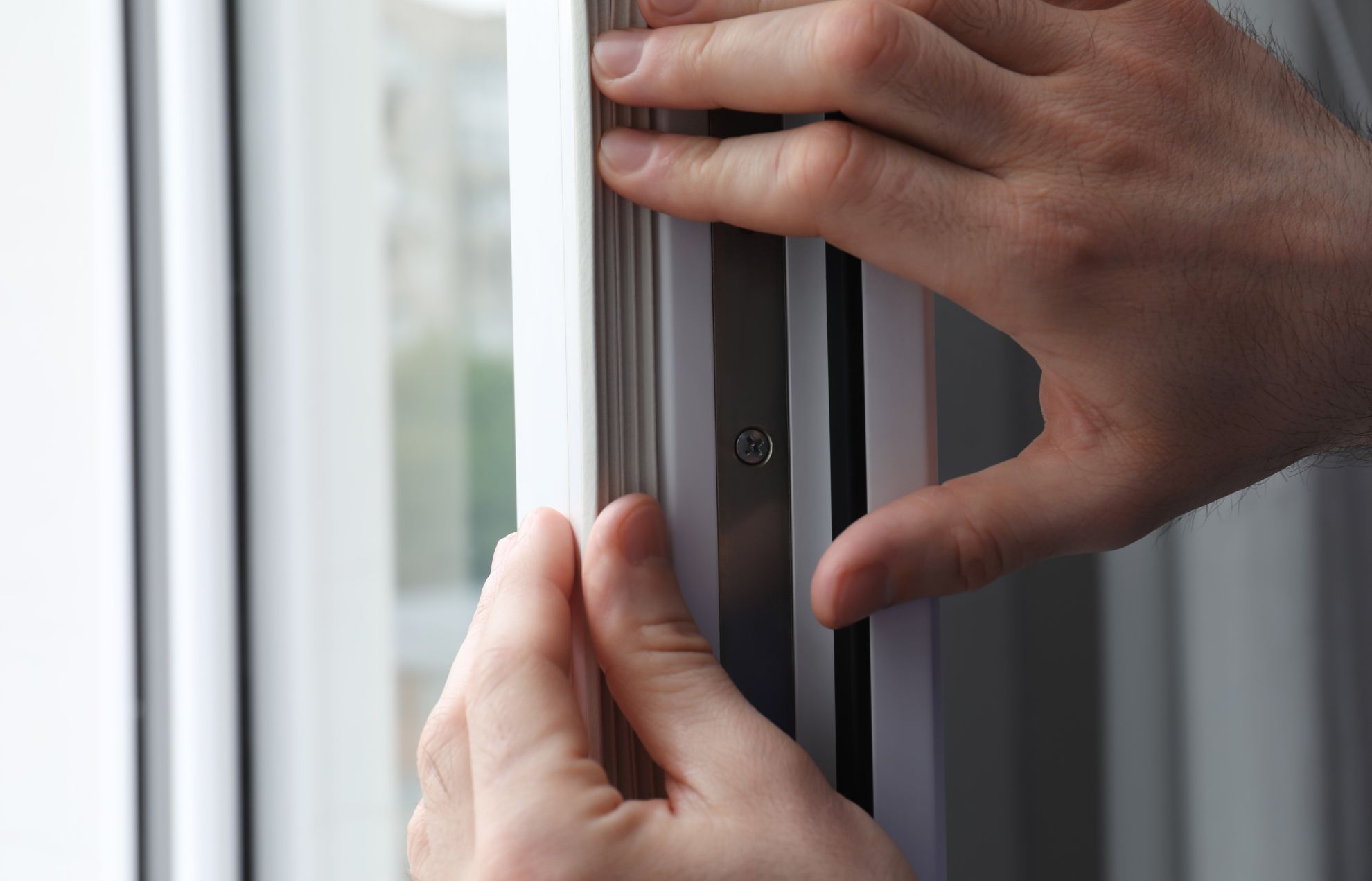
Condensation is a common phenomenon that occurs when warm air comes into contact with a colder surface, such as windows. It manifests as water droplets or moisture forming on the window panes, and it is a natural result of excess moisture in the air.
However, when condensation forms on new windows, it can raise questions and concerns for homeowners.
In this blog, we will explore the causes of condensation on windows, the reasons why new windows may have condensation, and the best ways to minimise and manage condensation in your home.
What is Condensation?
Condensation is the process of water vapour turning into liquid water. It occurs when warm, moist air comes into contact with a colder surface, causing the water vapour to condense and form water droplets. This temperature difference causes the air to release moisture, resulting in condensation on the surface, such as windows or doors.
In nature, this ‘dew point’ presents itself as the water droplets visible on grass or cobwebs in the early morning. The same process happens when the temperature of a home’s internal surfaces – say, the inside of a window or door – is different from the temperature of the external environment.
The amount of condensation depends on the humidity levels inside your home, the temperature difference, and the dew point, which is the temperature at which the air becomes saturated and condensation forms.
What Causes Condensation on Windows?
The primary cause of condensation on windows is the temperature difference between the warm air inside your home and the cold surface of the glass panes. When warm, humid air comes into contact with the colder window surface, the air loses its ability to hold moisture, leading to condensation.
Excessive moisture in the air, such as from cooking, showering, or wet clothes, can contribute to window condensation during the Autumn and winter months.
Poor ventilation, inadequate air circulation, and high humidity levels in your home can also exacerbate the problem. Additionally, old windows, single glazing, or a poor window seal can increase the appearance of condensation.
So, should new windows have condensation on the inside?

Should New Windows Have Condensation Inside?
It is normal for new windows to have condensation, especially during the colder months of the year.
New windows, particularly double glazing with insulating gas and warm edge spacers, are designed to be more energy-efficient, which reduces heat transfer. As a result, the temperature difference between the warm air inside your home and the cold surface of the windows is increased, leading to condensation.
However, the appearance of condensation inside the panes of new windows may indicate a problem with the window seal, which may require a replacement. If this is the case, contact a window installer in Leicester, such as Phair Windows.
Why Do My New Windows Have Condensation on The Inside?
New windows with condensation on the inside of the panes may be a result of excessive moisture in the air inside your home. Insufficient air circulation, high humidity levels, and temperature differences can contribute to condensation on the inside of new windows.
It is important to ensure proper ventilation, such as trickle vents or extractor fans, to remove moist air and minimise condensation. If condensation persists, it could be a sign of a double glazing failure. This ventilation problem, the lack of trickle vents, or a faulty window seal, should be addressed by a window professional.
Regularly opening your windows to allow air to circulate can help banish moisture-laden air and invite in cooler, dry air, which can be more cost-effective to heat. Investing in windows fitted with trickle vents will allow you to ventilate your home effectively while maintaining the highest levels of security.
How Can I Stop Condensation Forming?
To stop condensation from forming, it is important to implement proper ventilation, air circulation, and moisture control strategies in your home. Here are a few practical ways to minimise condensation:
- Ensure good air circulation by opening windows, using trickle vents, or installing a ventilation system.
- Balance your heating system to avoid excessive temperature differences, which can lead to condensation.
- Keep your bedroom warm, dry, and well-ventilated to minimise condensation on bedroom windows.
- Regularly air your home, especially early morning, to remove excess moisture and prevent condensation.
- Ventilate your kitchen and bathroom, where moisture levels tend to be higher, to minimise condensation.
Do Windows with Condensation on the Inside Need Replacing?
Windows with condensation inside the two panes may indicate a problem with the window seal, which may require a replacement. Excessive condensation inside windows, especially if it causes water damage or leads to mould growth, should be a cause for concern.
Consulting a window professional can help assess the extent of the condensation problem and determine the best course of action. In some cases, the condensation issue can be resolved without the need for window replacement, but the age, condition, and energy efficiency of your windows should be taken into consideration when deciding whether a replacement is the best option.

Window Repairs and Replacement From Phair Windows
As expert window fitters in Leicester, we understand the challenges homeowners face when it comes to condensation on windows. Our experience and knowledge of window installation and window repairs allow us to provide you with the best solutions to minimise condensation and improve the energy efficiency of your home.
Whether you’re looking for misted window repairs or to upgrade to the most energy-efficient A+ rated windows and doors on the market, get in touch with our team.
Frequently Asked Questions
Condensation on the inside of new double glazed windows is a common occurrence. This phenomenon happens because new windows are more energy-efficient and airtight, which restricts air circulation. The condensation should decrease as your home’s humidity levels stabilise. However, if the condensation persists or becomes excessive, it is recommended to contact your window installer for further advice and assistance. Outside condensation means your windows are not allowing any heat transfer, so if you have some condensation on the outside of your windows – relax! It just means your double glazing is doing a great job of insulating your home.
Condensation on the inside of windows can be a normal occurrence, especially in certain situations, such as high humidity levels or temperature differences between the inside and outside of your home. However, it’s still a good idea to check your sills and frames. If you have gaps between the window and frame, you may find patches of condensation collecting inside your home, which could indicate moisture inside your walls. It’s important to check for drafts around your windows to protect your walls from water damage. If you have concerns about your window’s performance, it is best to consult a professional who can assess the situation and provide appropriate recommendations.
No, new windows should not have moisture on the inside, including interior window condensation. Condensation on the inside of windows, especially new windows, can be a sign of poor installation or faulty seals. High humidity levels and temperature changes can also contribute to condensation on windows, including interior window condensation. If you notice excessive condensation on your new windows, it is important to contact the window installer immediately for inspection and potential resolution of the issue.
Condensation on new windows is a common occurrence due to their tight seal. The moisture comes from indoor humidity levels, which can be reduced by using a dehumidifier or increasing ventilation. Adequate ventilation is necessary to prevent excess moisture buildup in the home. If the condensation persists, it may be a sign of a faulty installation or poor quality windows. However, homeowners can address condensation by investing in windows fitted with trickle vents, which will allow them to ventilate their home while maintaining the highest levels of security. Another tip is to regularly wipe the windows to avoid the build-up of black mould. Additionally, ensuring that the home is adequately heated is important as insufficient heat in the room can cause condensation to occur on the inside of the glass.
Related Articles:
- 5 Causes & Signs of Double Glazing Failure
- Do Trickle Vents Help Stop Condensation?
- How to Stop Condensation on Windows
- What is Double Glazing? How Does it Work?
- How to Stop Draughts From uPVC Windows
- How to Fix Blown Double Glazing & Clear Misted Windows












